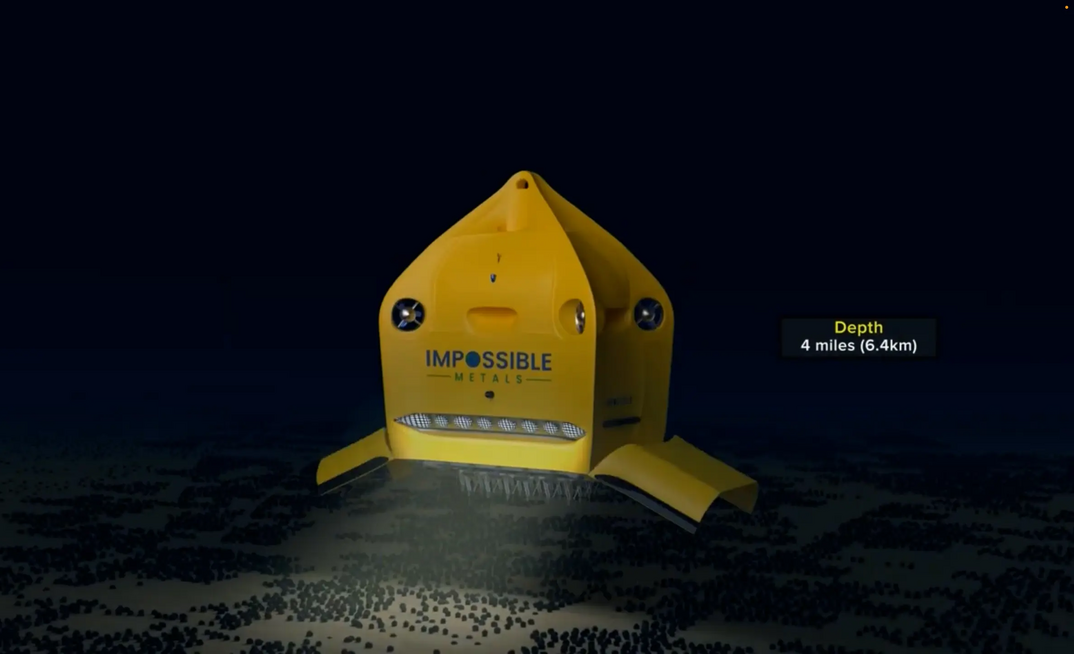Interest in seabed mining as a new way to harvest rare minerals is growing. However, many challenges lie ahead for innovators looking to gain a stake in this fledgling industry – not least demonstrating it can be achieved in an eco-friendly way, and securing patent protection to support the industry's commercialisation.
In January 2024, Norway became the first country in the world to permit deep-sea mining in its territorial waters and later this year, a meeting between the UN's International Seabed Authority (ISA) and 169 member states could finalise regulations that permit commercial extraction in international waters. However, seabed mining is increasingly taking heat from environmental lobbyists, and the regulatory requirements for new technologies and methods are yet to be settled. In the short term, innovators in this field must put up with considerable uncertainty, and they will need to overcome several hurdles to bring their inventions to market.
To date, deep-sea mining has been limited to exploratory missions licensed by the ISA. However, rising demand for resources such as copper, cobalt and lithium, which are used to make batteries for electric vehicles (EV) and other clean energy technologies, makes a strong case for permitting future seabed mining activity. Some analysts have projected global lithium shortages as early as 2025 which could stall uptake in EVs and the wider energy transition. Low regulatory approvals for new copper mines and the pace of electrification could bring copper shortfalls too.
The fact that deep-sea mineral deposits are more universal than those found on land could bring benefits in terms of security of supply. Countries mining in their own waters would be less dependent on international resources and benefit strategically from access to a local supply of rare minerals. Seabed mining could also prove more economical than traditional land-based mining. Unlike terrestrial deposits, a single deposit of deep-sea polymetallic nodules could provide multiple commodities, making the harvesting process more efficient. For example, deposits in the Clarion-Clipperton Zone of the Pacific Ocean have been found to contain manganese, copper, cobalt and nickel.
YOU MIGHT ALSO LIKE
Patently not obvious
However, seabed mining does pose several issues for innovators. Whilst open-cast mining is an incredibly carbon-intensive process that uses large plant machinery powered by fossil fuels, research suggests seabed mining could negatively impact biodiversity on a scale 25 times that of terrestrial mining. Currently, seabed mining uses large hydraulic pumps to indiscriminately draw nodules up to the surface, displacing and destroying seabed habitats in the process.
Patent activity in this technical space is currently quite low, which is unsurprising given that the commercial opportunity has only recently opened up. Among the early movers in this area was the Korea Institute of Ocean Science and Technology that filed a suite of patents in the late 2010s. These focused on deep-sea floor mining robots, tethered to a mining vessel on the surface and designed to move along the seabed. Later, the Ocean University of China and the China University of Geosciences (Beijing) filed a number of patent applications based on a similar principle – a robotic collector dragged along the sea floor by a tether connected to a surface vessel or a sub-sea mining platform.
More recent advances have focused on reducing the deleterious effect on seabed flora and fauna by moving from a ‘trawling' approach to a more selective ‘picking' approach. For example, Canadian start-up, Impossible Metals, has developed a robotic collection system, described in their international patent publication WO2023/183651, that harvests nodules individually with robotic arms to limit disruption to ecosystems and sediment on the sea floor. The system, which operates on an underwater autonomous vehicle that floats above the seabed, features image-sensing technology that identifies megafauna on nodules and ensures these are avoided to preserve nodule-dependent organisms.
Other innovators have focused on technology to identify the best prospective sites for seabed mining, such as Equinor Energy AS who describe a method of estimating polymetallic nodule abundance in their international patent publication, WO2022/093036.
When developing new mining technologies or methods, innovators face several intellectual property (IP) challenges. With the ISA's decision still pending, the technical requirements for methods of extraction and other technologies related to seabed mining are not yet known. Should specific technical requirements be revealed, a spike in patent filings for solutions that satisfy those requirements is likely.
Innovators need to be aware of some specific limitations when considering their patent strategy for seabed mining technologies. Patents directed to methods of operating seabed mining equipment, rather than to the equipment itself, would only be infringed by carrying out those methods. If that operation occurs in international waters, difficult questions of jurisdiction arise. Most countries' patent laws have specific exceptions that prevent the enforcement of patents in relation to products in the body, machinery or tackle of a ship temporarily in that country's territorial waters. This again poses problems of enforcement.
In other ways, territorial considerations could bring benefits for innovators. For example, it could be beneficial to file patents in countries with ports close to the location of large, deep-sea mineral deposits. Doing so could offer innovators a monopoly on rare minerals and position them as a dominant player in a developing industry.
With regulatory practices for deep seabed mining in areas outside of national jurisdictions not yet established, innovators can't be sure whether their technologies are likely to become industry standard or not. However, with governments around the world committed to achieving net zero and most pursuing electrification strategies, they can be certain of growing demand for minerals such as lithium, cobalt, copper and manganese.
The old adage that those who sold picks and shovels in the gold rush made more money than the prospectors, could easily apply to this new opportunity. Securing intellectual property rights to environmentally acceptable extraction methods and equipment could prove important and lucrative.
Dave Croston is a partner, patent attorney and head of the Advanced Engineering group at European intellectual property firm, Withers & Rogers.

























